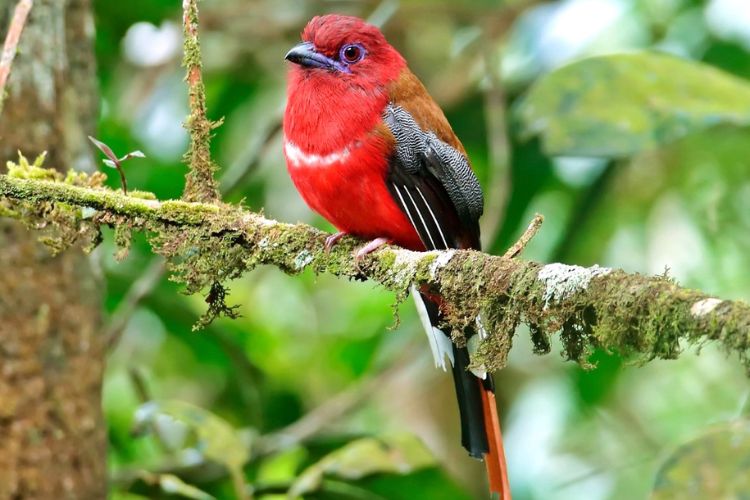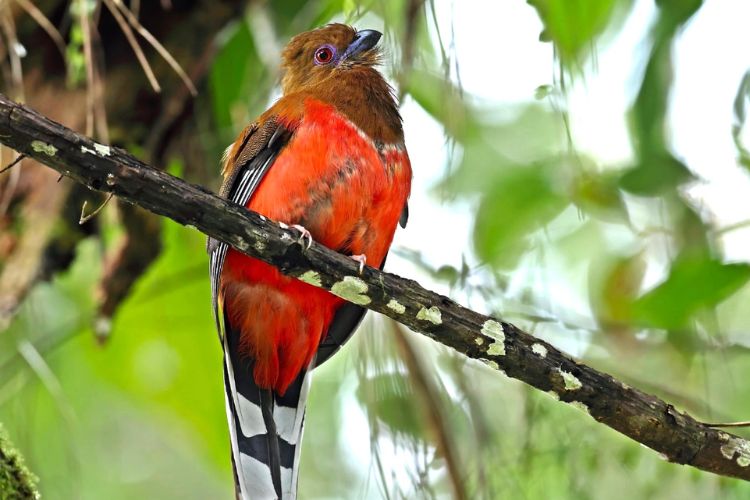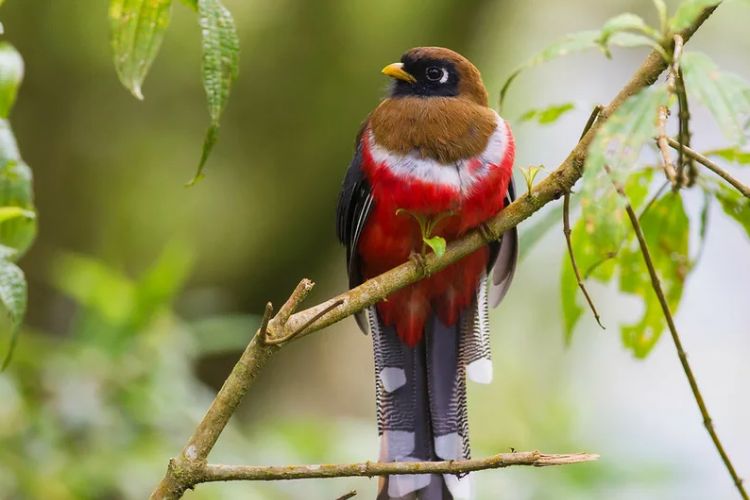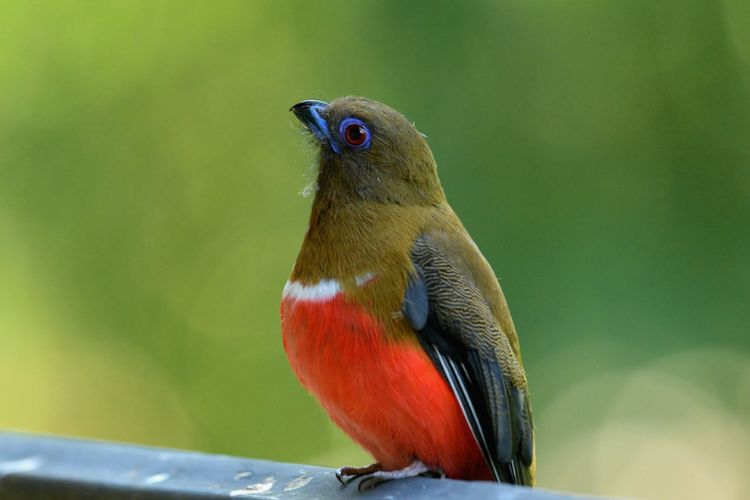The Red-headed Trogon (Harpactes erythrocephalus) is one of the most captivating birds in the dense forests of South and Southeast Asia. The male, in particular, stands out with its vibrant red plumage, giving the bird a striking, almost regal appearance. This species is known not only for its unique beauty but also for its gentle, elusive nature, making it a prized sighting for birdwatchers and nature enthusiasts.

A Display of Vibrant Colors
The male Red-headed Trogon is a visual marvel. Its head, as the name suggests, is adorned with a rich, crimson hue that contrasts elegantly with its brownish-orange wings and strikingly bright red belly. Its tail feathers are long and intricately patterned, while its eyes, encircled by a yellow ring, give the bird an alert and expressive look. The combination of bold colors creates an almost surreal appearance, as if the bird belongs to an exotic painting rather than the natural world.
One of the most captivating aspects of the male Red-headed Trogon’s beauty is how it stands out amidst the greenery of its forest habitat. Its vivid red coloring contrasts against the dense foliage, making it easy to spot when perched, although the bird’s stillness and quiet demeanor often allow it to blend into its surroundings.

Solitary and Elusive
Despite its eye-catching beauty, the Red-headed Trogon is a relatively shy and elusive bird. It prefers to live in the cool, shaded undergrowth of tropical and subtropical forests, where it can remain hidden from view. Often found perched quietly on low branches, it waits patiently for insects and small prey to cross its path. The bird’s calm, almost meditative behavior adds to its mystical allure. Its ability to remain motionless for long periods makes it difficult to spot, even for experienced birdwatchers.

Unlike many birds that are social or noisy, the Red-headed Trogon is known for its quiet, solitary nature. It usually roams alone or in pairs, rarely seen in large groups. This solitary lifestyle is part of what makes sightings of the male Red-headed Trogon so special, as it is a rare treat to observe this bird in its natural habitat.
A Skilled Forager
The Red-headed Trogon is a patient and skilled forager. Its diet consists mainly of insects, small invertebrates, and fruits, which it plucks from the forest floor or catches mid-flight. Using its keen eyesight, it scans the undergrowth for movement, then swoops down with precision to capture its prey. Despite its brightly colored appearance, the trogon’s quiet movements and stealthy hunting techniques make it an adept hunter in the forest.

Its long tail and broad wings give it excellent maneuverability, allowing the trogon to navigate through dense vegetation with ease. This bird’s graceful flight is often described as slow and gliding, adding to the sense of calm and serenity that surrounds its presence in the forest.
A Symbol of Serenity and Mystery
The male Red-headed Trogon is not just a beautiful bird; it’s a symbol of serenity and the mystery of the forest. Its quiet, unhurried nature contrasts with the more energetic and vocal species that inhabit the same regions. Observing a Red-headed Trogon is like catching a glimpse of the hidden beauty of the wild, where stillness and patience reveal the true elegance of nature.